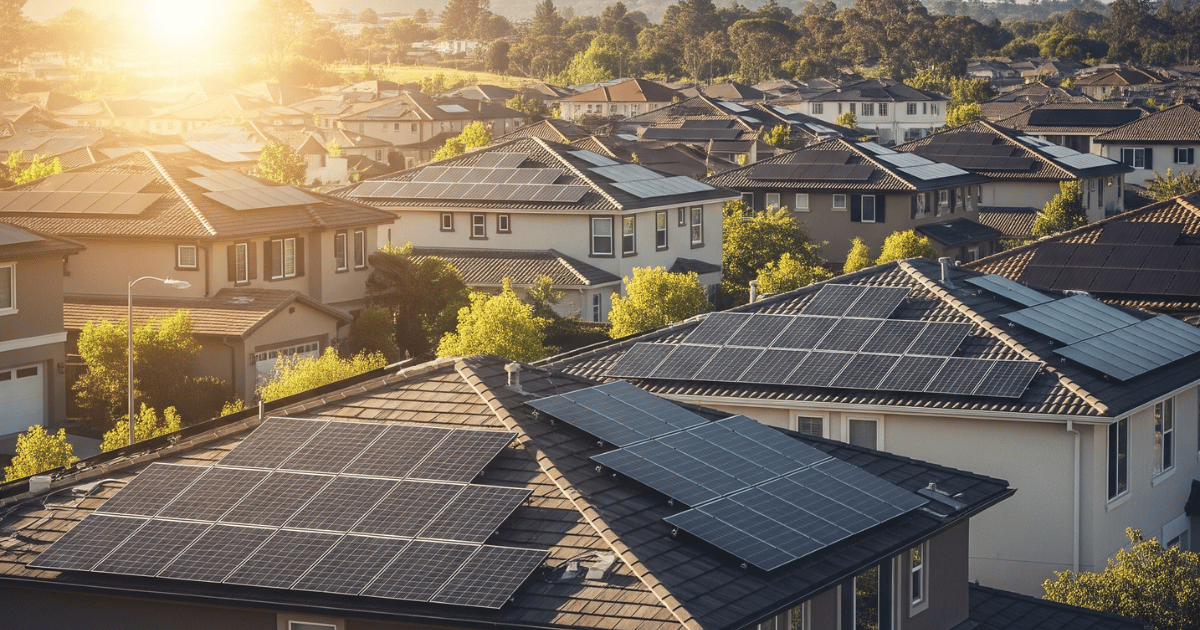- Renewables Rising
- Posts
- Financing costs of solar kits have stabilised
Financing costs of solar kits have stabilised

From the newsletter
Loan rates for buying solar home systems in Kenya, South Africa, Nigeria and Egypt have all remained the same in July, marking the first stable month after persistent fluctuations since early 2025. South Africa had experienced especially sharp volatility, with solar financing rates doubling to 13.5% annually last month. Is the market now entering a period of stability?
Newfound solidity in solar home system interest rates likely signals growing market maturity. This enables better risk management and should result in greater investor confidence in the PAYGo model.
Renewables Rising tracks and analyses financing costs for solar home systems in local currencies in four representative countries: Kenya, South Africa, Egypt and Nigeria and updates data on a monthly basis.
More details
For consumers, the current financing stability means loan repayments are predictable for now, but with high interest rates, the overall financial burden remains substantial. Stable rates may offer budget certainty, but they do not ease the underlying challenge of affordability, especially for lower-income households.
Though financing has stabilised, solar home systems remain expensive across Africa. For example, in South Africa, the annual cost of financing a 10 kW system is still more than double its original cash price because repayments, while extended over several years, result in high cumulative interest. This pattern is mirrored in other countries and continues to limit affordability for many.
Meanwhile, rising fossil fuel prices, such as Kenya’s recent 6.45% increase and similar price surges in Nigeria, are likely to make solar power more attractive by comparison, even when high interest rates persist. This trend increases the incentive for households to shift away from costly, volatile fossil fuels, making solar a more compelling long-term investment.
The divergence in electricity tariffs across Kenya, Nigeria, South Africa, and Egypt has direct implications for the solar market’s outlook. While Kenya and Nigeria’s marginal tariff reductions may temporarily ease pressure on households, South Africa’s steep 11.32% hike implemented by municipalities from July 1 significantly raises the cost of grid power for many. Stable prices in Egypt provide predictability but no relief from existing energy costs.
Tax policy also continues to be a major driver of solar kit prices. In Kenya, the proposed 16% VAT on solar equipment in the 2025 Finance Bill has sparked widespread debate, as similar past policy changes have led to sharp declines in solar market demand. Policy decisions like these can rapidly raise barriers for consumers and slow the pace of solar adoption.
Moreover, exchange rate volatility also directly affects the pricing of solar home systems, especially in markets heavily reliant on imports. In Nigeria and South Africa, frequent swings in local currencies increase the cost of imported solar components, which is then passed on to consumers. Egypt’s market remains particularly sensitive to movements in the local pound, given ongoing challenges with foreign currency availability needed for solar equipment imports.
However, as local manufacturing in Nigeria, South Africa, and now Kenya expands, notably with KenGen’s new solar kit manufacturing plans, there is potential for a gradual decline in system costs. Local production should dampen currency risk and reduce dependency on imported solar components, supporting cheaper and more stable prices. But this remains a dream at the moment as local manufacturing is yet to pick up to meet the demand.
Our take
The solar home systems market remains volatile, still at the mercy of shifting government policies and investor moods. Any tax, currency, or subsidy change can upend stability overnight.
Nonetheless, as local manufacturing ramps up and the sector matures, we foresee greater price stability on the horizon. With solar now cheaper and governments focused on rural electrification, enduring affordability and reliability are within reach.
Still, true stability will require consistent regulation, better access to finance, and clear commitment to renewables. Without these, the market may continue to experience unpredictable swings.